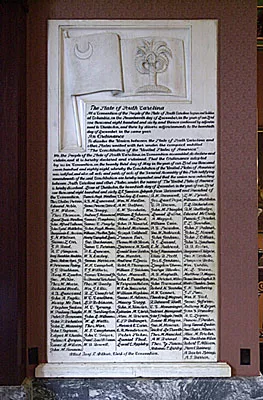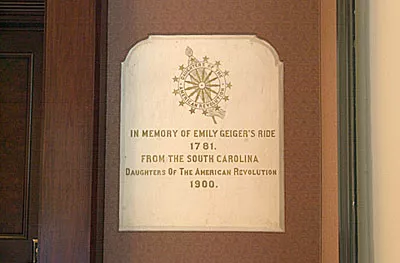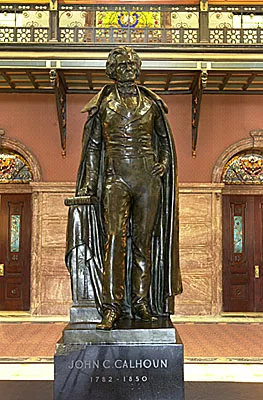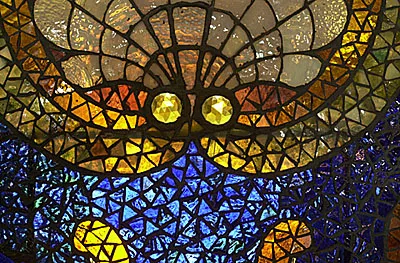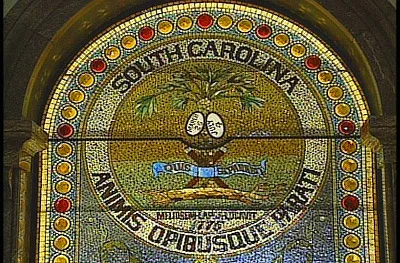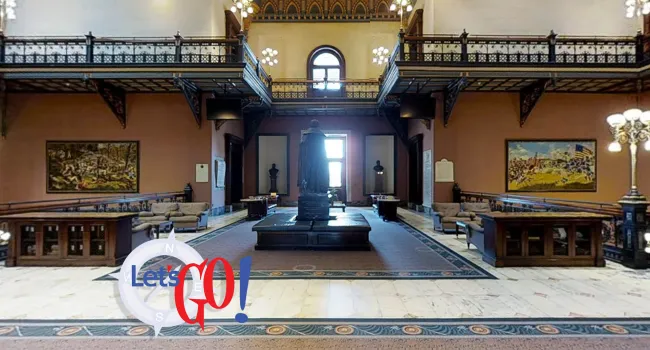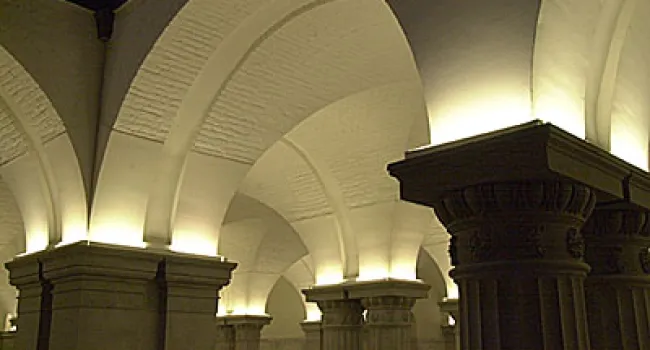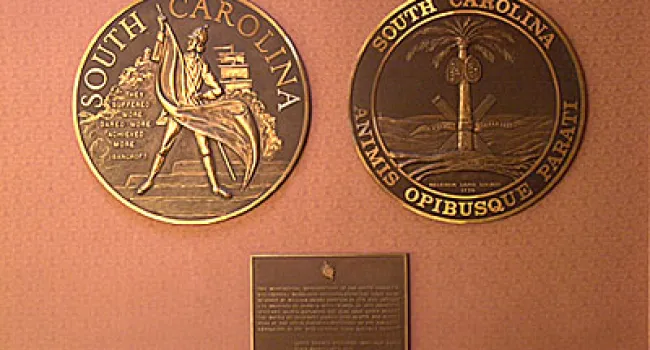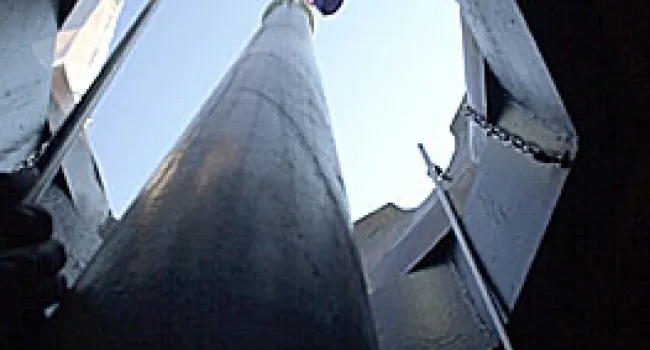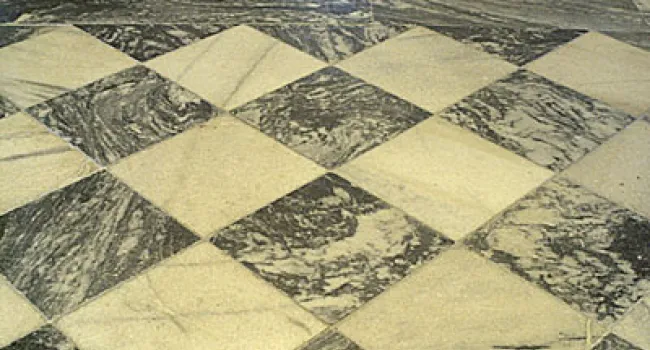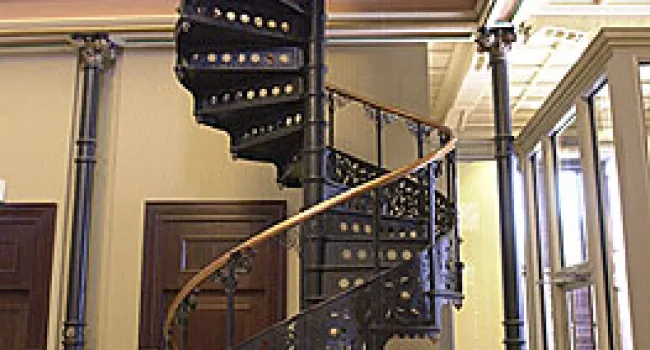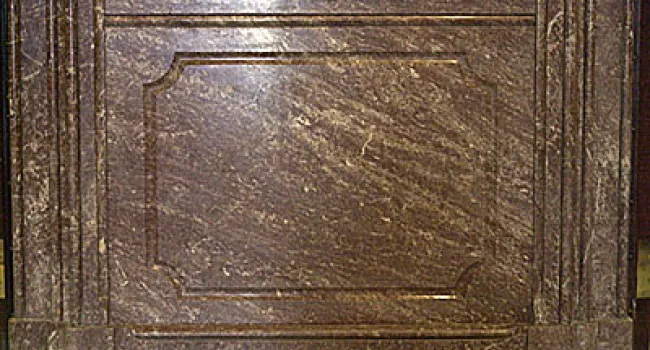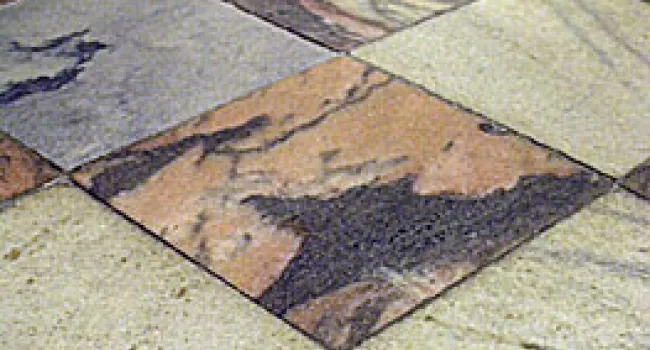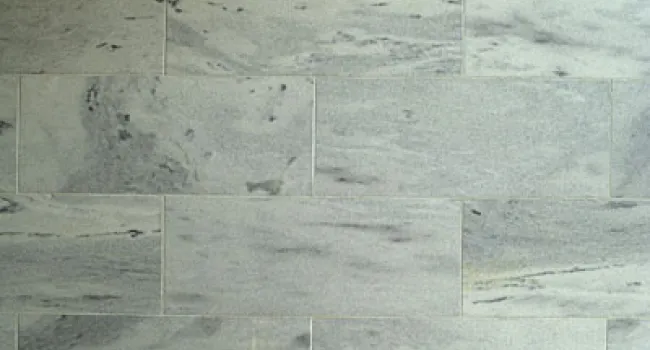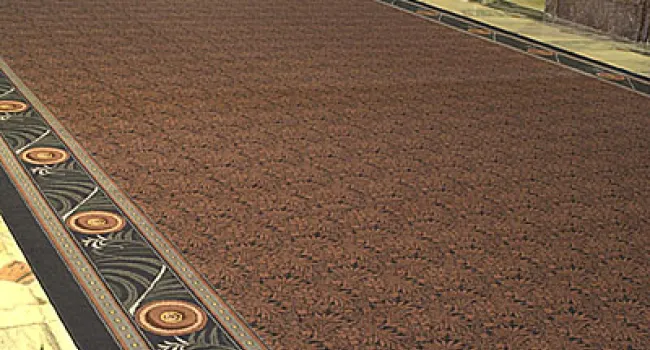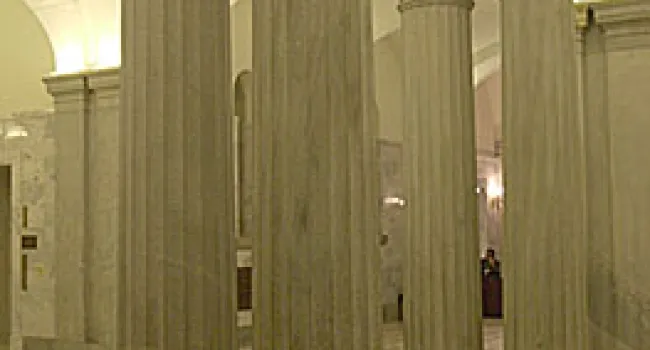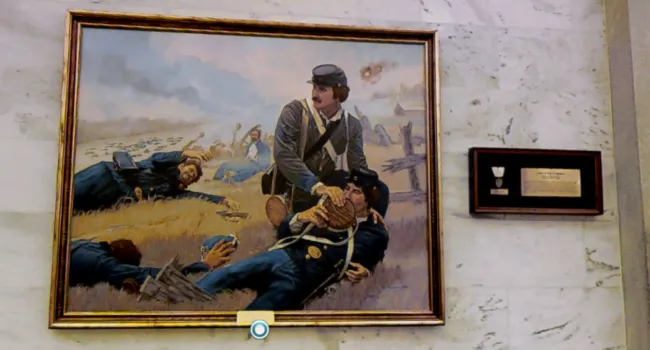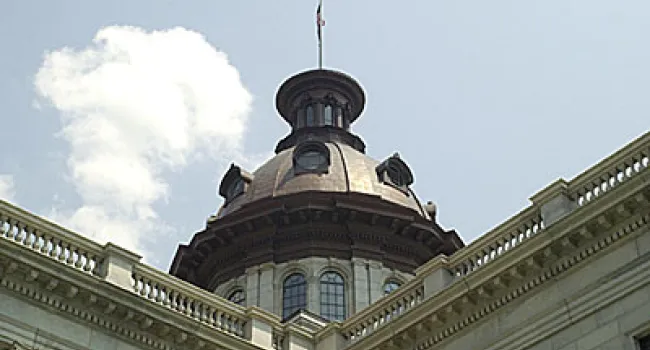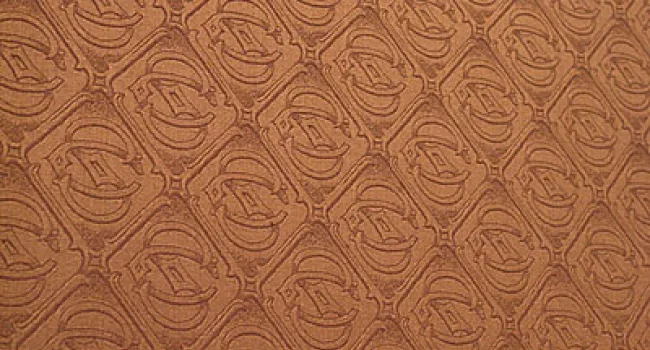As is common with other areas of the State House, memorials, statuary, and other objects of art can be seen in the main lobby. These include a marble replica of the Ordinance of Secession, a memorial plaque dedicated to Revolutionary War heroine Emily Geiger, a life-size statue of South Carolina statesman John C. Calhoun, and three extremely rare examples of stained glass found over the mahogany doors in the main lobby with a much larger example of stained glass using the same technique found above the doors inset into the wall of the main lobby balcony.
Ordinance of Secession: On the wall of the main lobby near the main entrance is this carved marble representation of the Ordinance of Secession. Adopted December 20, 1860, this document declared the State of South Carolina independent of the United States of America. Eventually, 10 other southern states seceded from the Union, forming the Confederate States of America. The Secession Convention was first held at the First Baptist Church in Columbia, then moved to Charleston where the Ordinance of Secession was adopted and signed.
Emily Geiger. Opposite the Ordinance of Secession is a plaque honoring Revolutionary War heroine Emily Geiger. When eighteen-year-old Emily heard that General Nathaniel Greene needed someone to carry a message to Thomas Sumter and Francis Marion, she volunteered. To deliver the message, it was necessary that she cross British lines and, as a result, she was captured by the enemy. When the soldiers left her alone to find a female to search her, Emily memorized the message, then tore it into small pieces and swallowed it. When the British were unable to find anything after searching her, they released her. She was able to complete her mission and deliver the crucial messages to Sumter and Marion, saving many patriot lives.
John C. Calhoun. The front hall of the Main Lobby is dominated by a life-size statue of John C. Calhoun, considered to be one of South Carolina’s greatest statesmen. He served nationally as Secretary of State, Secretary of War, United States Congressman, and United States Senator. He was Vice-President of the United States under presidents John Quincy Adams and Andrew Jackson. It is likely that John C. Calhoun would have been elected President of the United States had he not made many enemies by supporting nullification, the theory that the individual states can override laws passed by the United States government. His theories on nullification led to the state’s rights movement, which eventually led to secession and civil war.
Stained Glass Windows. Inset in the outside facade of the Main Lobby are three extremely rare stained glass windows. The windows were made in Baltimore by a friend of John Niernsee, first and principal architect of the South Carolina State House. The windows were made using a “mosaic” process. Once available in the United States and other countries, the manufacture of “mosaic” glass is now a lost art form and it is no longer made anywhere in the world.
The most ornate of the “mosaic” glass creations is found on the balcony level of the main lobby. Approximately 37,000 individual pieces of glass, some resembling precious gemstones, were used to create the balcony window. The front side of the South Carolina state seal is depicted on the glass. This glass, as are the other three “mosaic windows,” is covered with iron work to protect it from damage.
